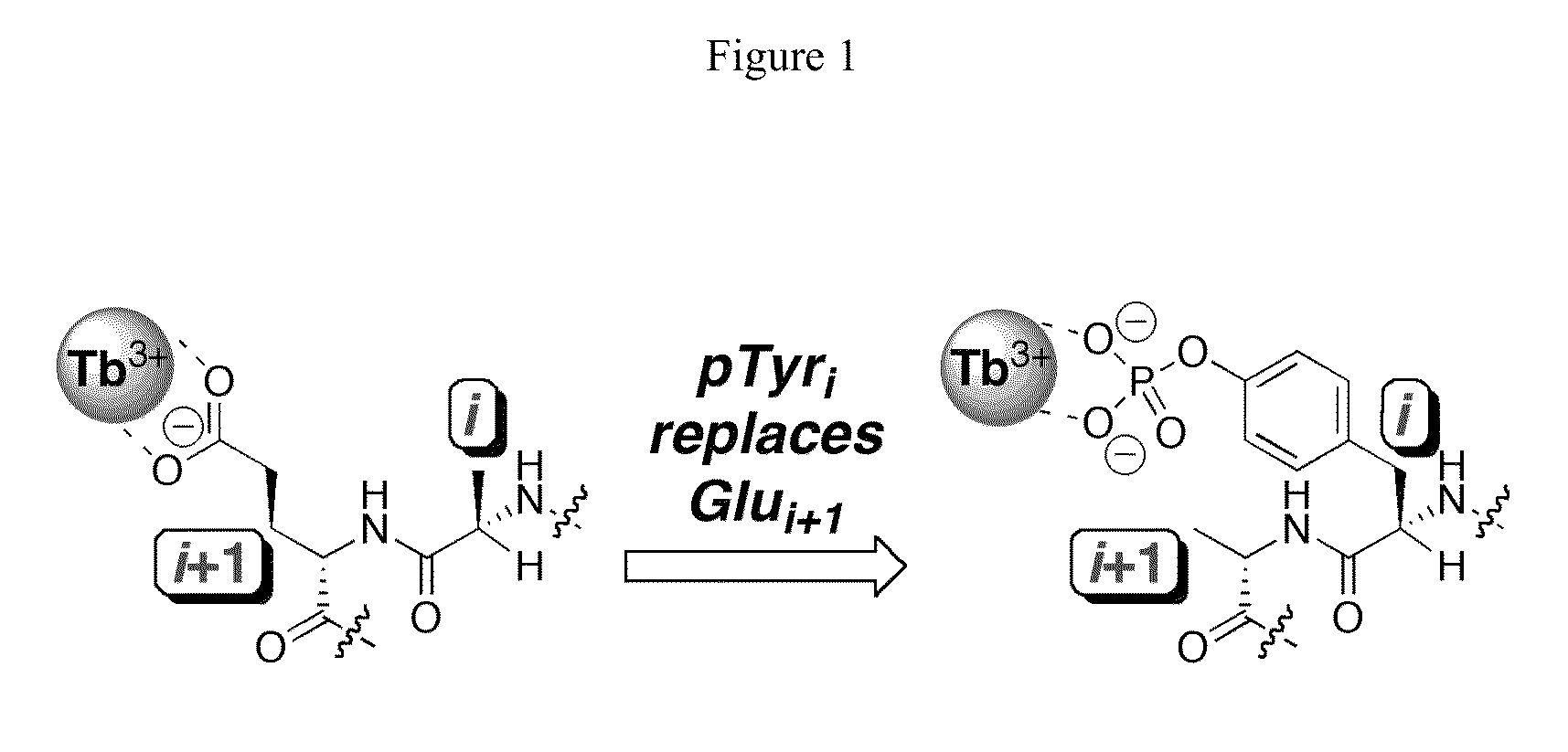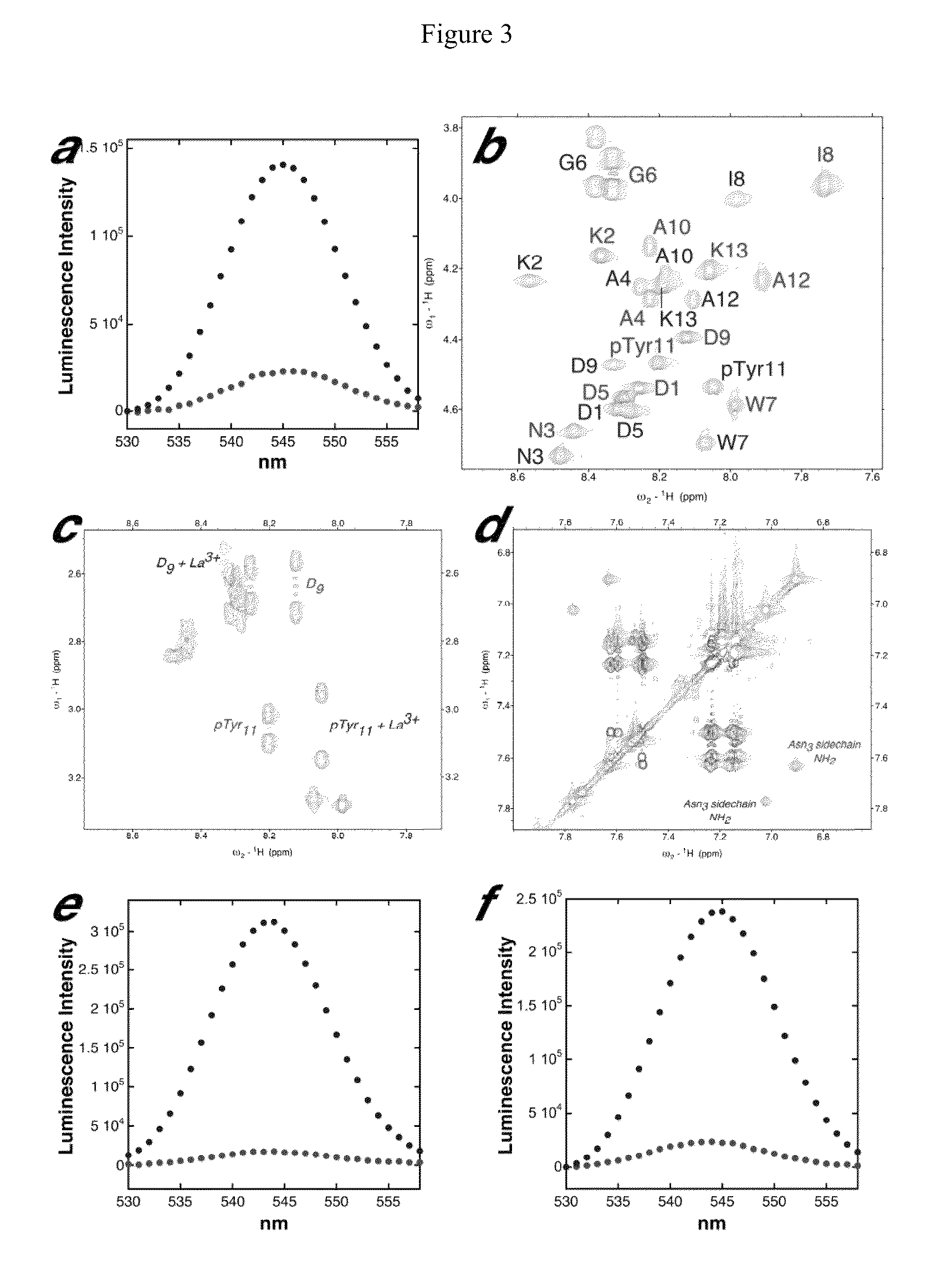Tyrosine kinase-inducible domains
a kinase and domain technology, applied in the field of tyrosine kinase-inducible domains, can solve the problems of reducing the sensitivity to small changes, limiting the potential applications of the system, and the size of the structure is greater than 50 kd, so as to achieve the effect of reducing the detected luminescen
- Summary
- Abstract
- Description
- Claims
- Application Information
AI Technical Summary
Benefits of technology
Problems solved by technology
Method used
Image
Examples
example 1
Design of Encodable Tyrosine Kinase-Inducible Domains
[0068]Tyrosine kinase-inducible domain peptides were designed and evaluated for detection of tyrosine kinase activity by terbium luminescence. The materials, methods and results of this experiment are described in Zondlo et al., J. Am. Chem. Soc. 2010, 132(16):5619-21 and its Supporting Information, the contents of each of which are hereby incorporated in their entireties.
[0069]The tyrosine kinase-inducible domain peptides bind terbium(III) in a phosphorylation-dependent manner, showing strong terbium luminescence when phosphorylated but weak terbium luminescence when not phosphorylated. Lanthanide binding was confirmed by NMR. A tyrosine kinase-inducible domain peptide, pKID-Abl, was designed to incorporate a recognition sequence of the Abl kinase. Incubation of pKID-Abl with the Abl kinase resulted in a large increase in terbium luminescence. This increase in luminescence was abolished when the pKID-Abl and the Abl kinase were i...
PUM
| Property | Measurement | Unit |
|---|---|---|
| pH | aaaaa | aaaaa |
| pH | aaaaa | aaaaa |
| particle size | aaaaa | aaaaa |
Abstract
Description
Claims
Application Information
 Login to View More
Login to View More - R&D
- Intellectual Property
- Life Sciences
- Materials
- Tech Scout
- Unparalleled Data Quality
- Higher Quality Content
- 60% Fewer Hallucinations
Browse by: Latest US Patents, China's latest patents, Technical Efficacy Thesaurus, Application Domain, Technology Topic, Popular Technical Reports.
© 2025 PatSnap. All rights reserved.Legal|Privacy policy|Modern Slavery Act Transparency Statement|Sitemap|About US| Contact US: help@patsnap.com



